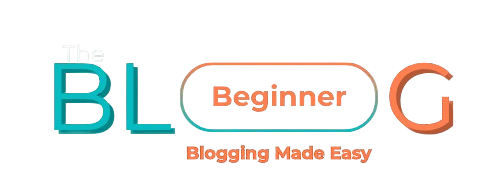How to Create High-Quality Blog Content That Attracts, Engages, and Converts
Table of Contents
Blogging isn’t about writing more — it’s about writing better.
Better for your audience. Better for search engines. Better for your blog’s growth.
But content creation can feel overwhelming.
What should you write about? How do you make it helpful? How do you stand out?
In this guide, you’ll learn a step-by-step system to create blog content that actually matters — content that gets read, shared, and trusted 🧠✍️
🎯 1. What Is “High-Quality” Blog Content, Really?
It’s not about sounding smart or writing long paragraphs.
Great blog content is:
- 🔍 Relevant – solves a real problem
- 🤝 Helpful – clear, honest, and practical
- 🧭 Organized – easy to read and navigate
- 💡 Original – your unique voice or angle
- 📈 Optimized – search-friendly without sounding robotic
If your post genuinely helps someone → you’re doing it right.
🧠 2. Before You Write: Do a Quick Content Prep
Don’t open a blank page yet — take 15 minutes to plan.
✅ Ask Yourself:
- Who is this post for? (Beginner, intermediate, expert?)
- What problem does it solve?
- What will the reader walk away with?
📌 Tip: Turn every blog post into a mini solution.
🗂️ Create a Simple Content Outline
Here’s a quick format that works for most posts:
- Catchy intro
- Main tips/steps (each with its own heading)
- Examples or tools
- Conclusion + CTA
📌 Use our Content Planning Tools if you prefer Notion, Trello, or Google Docs.
✍️ 3. Writing the Blog Post (With Confidence)
Break it into parts:
🧲 a. Write a Strong Headline
Your title should:
- Spark curiosity
- Promise value
- Use keywords naturally
Examples:
- “10 Blogging Mistakes Beginners Make (And How to Avoid Them)”
- “The Ultimate Guide to Choosing a Blog Niche”
📌 Practice headline writing with tools like CoSchedule or Sharethrough.
🧩 b. Hook the Reader with a Relatable Intro
Avoid fluff. Instead, speak directly to your reader:
“You want to start a blog. But everything feels… confusing. Where do you begin?”
Use short sentences, questions, and emotion to pull them in.
📚 c. Structure with Headings, Bullets & Flow
Use:
- H2s for main sections
- H3s for supporting details
- Bullet points for easy reading
- Short paragraphs (2–4 lines max)
Don’t overwhelm — guide them.
🔗 d. Add Links (Internal + External)
Link to:
- Other blog posts on your site
- Trusted external sources
- Tools and tutorials
📌 Bonus: Internal linking boosts your SEO and helps readers explore more.
📸 e. Use Visuals (Optional)
Even just one:
- Featured image
- Chart or infographic
- Screenshot or Canva graphic
📌 Don’t forget to compress with TinyPNG and add alt text.
🛠️ 4. After Writing: Optimize and Polish
🧹 Proofread
Use Grammarly or Hemingway Editor
Read it out loud (seriously — it works)
🔍 SEO Check (Basic Version)
- One focus keyword
- Keyword in title + first 100 words
- Proper H1–H2–H3 usage
- Meta description (150–160 characters)
- Internal links
- Alt text for images
📌 Full SEO support in our SEO Basics Guide
📤 Publish With Purpose
Before hitting publish:
- Add a featured image
- Preview on desktop and mobile
- Double-check links
- Choose the right category + tags
Then: hit publish and celebrate 🎉
🧠 5. Bonus: Keep Your Ideas Flowing
Content burnout is real.
Use these tools to always have ideas:
- Google Search / People Also Ask
- AnswerThePublic
- Pinterest auto-suggest
- Your own blog comments or emails
- Quora or Reddit
📌 Keep a running “Content Ideas” doc in Google Sheets or Notion.
✅ Final Thoughts
The best content doesn’t come from trying to be perfect.
It comes from trying to be genuinely helpful.
Start with your audience. Solve their problem.
Say it clearly. Share it confidently.
📌 Ready to sharpen your writing even more?
Next up → Writing Tips for Bloggers
